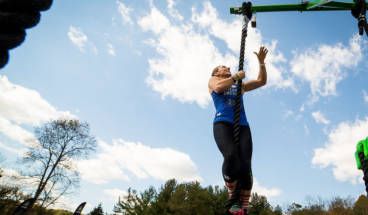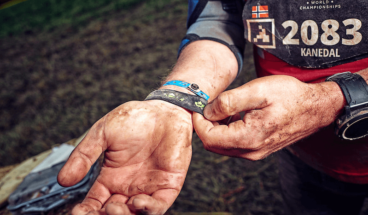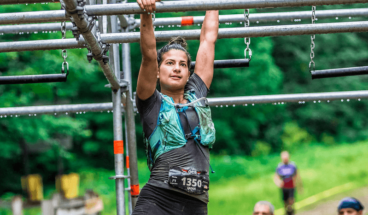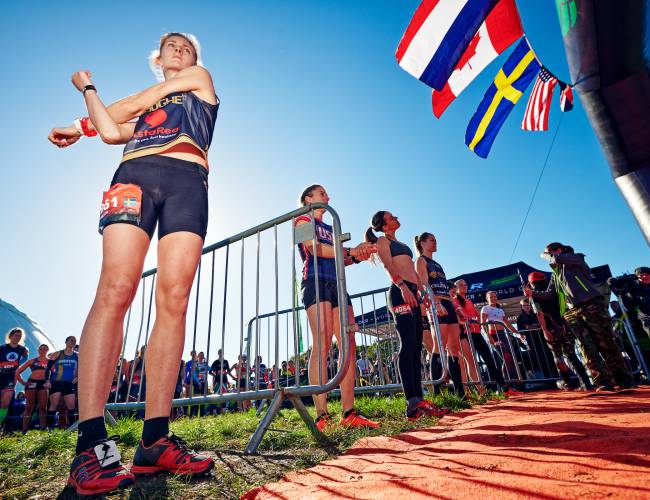
OCR Training Plan For Beginners
So you’ve qualified for the OCR World Championships and you want to make sure you keep that all important band, but where do you start?
With the right training and with enough confidence and belief that you can take on nearly any obstacle course that is set out in front of you.
The physicality required to navigate the course mimics the functional, whole-body movements made by our ancestors thousands of years ago: natural movements such as running, balancing, crawling, jumping, climbing, and carrying. Obstacle course racing is the perfect marriage of strength and endurance in a competition. In addition, you need explosive power, stability, and stamina.
Table of Contents
1) OCR Training Tips
2) OCR Workouts & Exercises
3) Distance Running
4) Sprints & HIIT
5) Grip & Upper-Body Strength
6) The 400 Workout
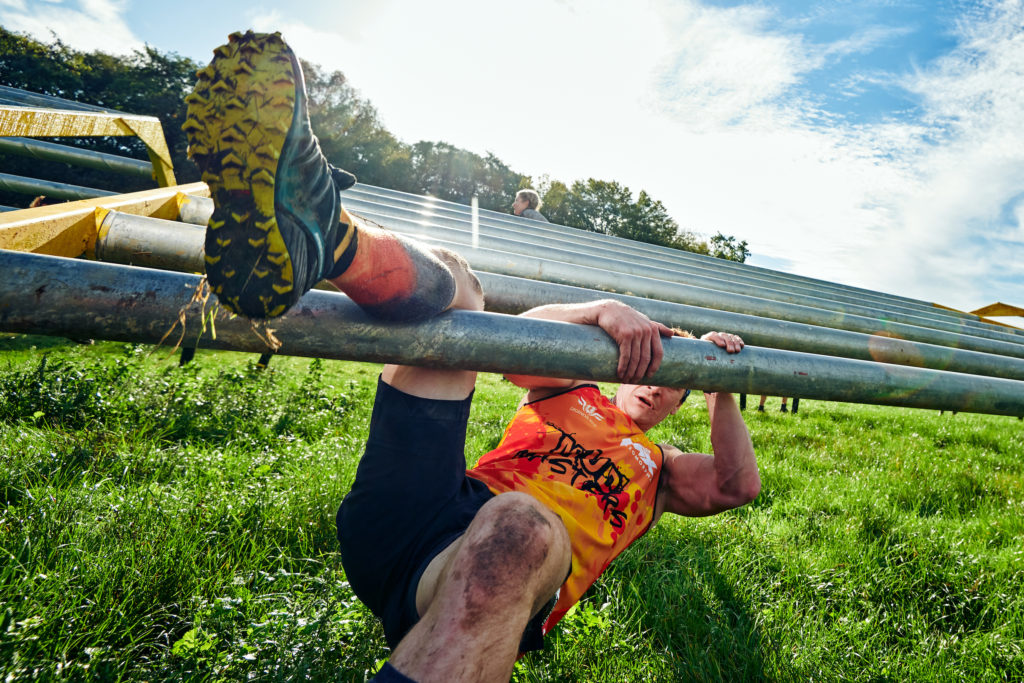
OCR Training Tips
Obstacle course races, especially the Obstacle Course Racing World Championships, require dedicated athletes committed to a strenuous, yet balanced training plan. While everyone’s training will vary, you should make sure your programming focuses on these elements:
- Improving core strength and mobility
- Building strength and stability across the hips, midsection, and shoulders
- Developing explosive movements, such as jumping and leaping
- Increasing endurance
- Creating seamless transitions between obstacles
And while it’s easy to find countless examples of training exercises and programs – don’t worry, more on that later – we wanted to make sure we covered more comprehensive tips surrounding training schedules, types, variation, and most importantly, rest.
Avoid Overtraining & Practice Adequate Recovery
First, we need to ask ourselves, what is overtraining? Overtraining normally occurs when an athlete’s training frequency exceeds the time their body needs to properly recover from exercise. Some exercises and sports can be addicting – like obstacle course racing – and it’s not uncommon to see athletes jump into very intense training in an effort to compete in more difficult competitions. What they don’t realize is that these super hard training sessions are having the opposite effect, and the body can break down instead of getting stronger.
So how do we stop ourselves from overtraining? Here are a few steps that can help you become better, stronger, and hit your races in peak condition without overtraining or putting yourself at risk for injury.
1. Make a Plan – Making a plan, for both training schedules and race timing, is critical for all obstacle course athletes. We recommend using a calendar to make a note of all your races and prioritize which ones are your A, B, and C races. Your A races are the big ones, the races you want to be most competitive in. B races are less important, but you still want to do well in them to gauge where your performance is at. C races are your training races; you will complete these at about 80% effort to keep advancing through your training plan.
2. Consult a Coach – The best way to find a good coach is to consult with our sport’s top athletes to find out who they use or recommend. They may not use a coach now, but they’ll probably be able to make a few suggestions. A good coach will give you everything you need; you just need to bring the intangibles: the commitment, determination, desire, and most importantly, the patience to trust the process and program. Coaches will also help you build in that recovery, which leads us to our next step.
3. Ensure Adequate Recovery – Rest is incredibly important, but it’s often ignored by athletes trying to get to the top. Sometimes there’s a misconception that if you’re not constantly pushing yourself and training hard every day, then you’re getting worse. If your training is at the right level, those rest days will allow you perform at a higher level on training days. Rest allows your body to repair, grow, and hit race day at your peak, ready to give 100%.
Recovery Essentials
There are different types of rest and recovery that you should make sure you incorporate into your total training routine. Some are active, some are passive, but all are essential for proper recovery.
- Sleep – Aim to get at least 6-8 hours of sleep at night.
- Active Recovery – Go for a very easy run, bike ride, or even walk the day after a race or heavy training day.
- Foam Roll/Massage – Foam roll regularly during training and schedule a sports massage a few days following a race.
- Hydrate – Drink plenty of water, especially leading up to and following a race.
- Stretch – Mobility is critical, so you should be incorporating mobility movements and stretching routines regularly.
- Deload – Leading up to a race, reduce your training to ensure that you hit race day at peak performance and are fully recovered from previous exertions.
Incorporate Variety in Training
It’s important that athletes prepare themselves for the unexpected. Quite often new obstacles will appear on the course, and you need to know how to approach them. If your OCR training has you always doing the same thing, facing something unexpected could throw your whole race.
In OCR, more so than in most other sports, variety is the key to improving your performance. One way many athletes do this is by incorporating varied exercises into their runs. For example, every 500 meters you can complete different exercises such as burpees, pull-ups or bear crawls, then continue the run and repeat. While this varied training is key for physical strength, it will also fatigue the whole body and get you mentally ready to run the obstacle course while tired.
OCR Training Workouts & Exercises
To help kickstart your training and give you some programming ideas, here are some of our recommended obstacle course training workouts and exercises. Before you get started, make sure you have some of the following:
- Somewhere to run, or a treadmill if in a gym
- A set of monkey bars or a bar to hang from
- Park bench or gym bench
- Makeshift balance beam
- Box to jump on
With a combination of some or all of these training implements and equipment, you will be well prepared to tackle these workouts and get into shape for professional obstacle course races.
Distance Running
One of the best ways to build endurance for full obstacle course races is to incorporate distance running and training that helps you achieve and maintain a specific heart rate. We recommend completing 80% of your training at 80% or less of your max heart rate. To achieve this, most athletes can run 10Ks and above, which will help you run further for longer and build that endurance into your legs and cardiovascular system. However, do not increase your running distance more than 10% week over week.
The other 20% of your run training should be done at a high intensity, race pace; 5Ks are great for this. You’ll find that over time you’re be able to run faster and keep your heart rate lower.
Sprint & High-Intensity Interval Workouts
There are several ways you can train to get the explosive power necessary for obstacle course racing. Hill sprints, track, and High Intensity Interval Training (HIIT) classes are great options.
- Hill Sprints: Find a hill that takes approximately 30 to 45 seconds to ascend in a full sprint. Once at the top, descend the hill at a walking pace for your recovery and then repeat 9 more times.
- Track Session: Start with sprint intervals with 200/400 splits – sprint 200 meters, walk 400 meters and repeat 9 times. Over time you can expand on this programming, adding more sets or going further distances.
*Bonus training tip – You can also mix in exercises like broad jumps or burpees between each sprint for an added challenge.
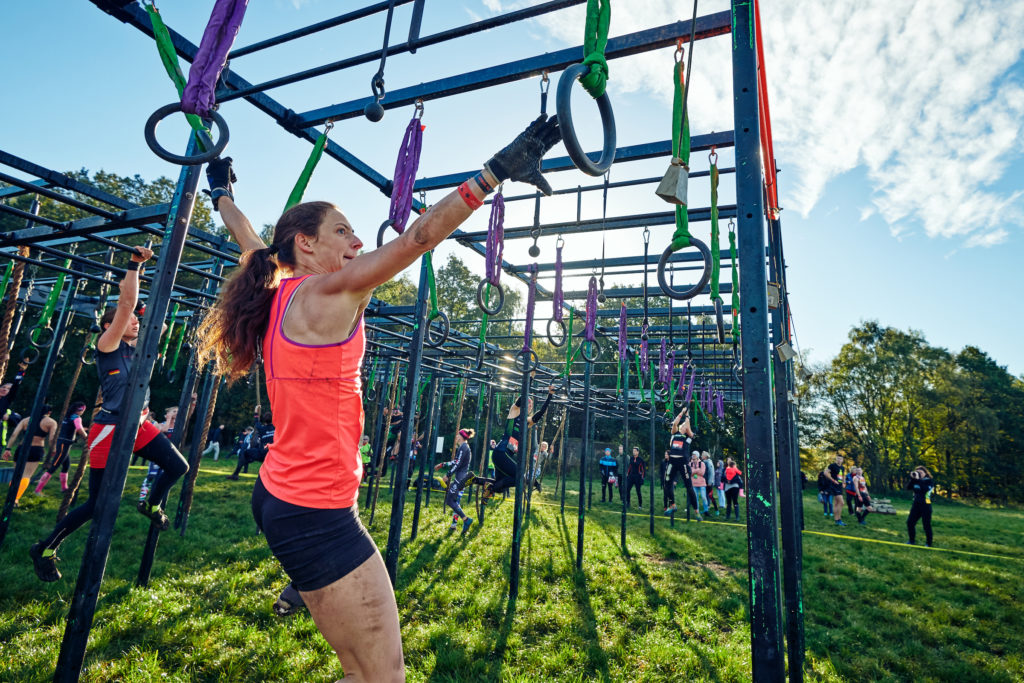
Grip & Upper-Body Training
Bouldering is one of the best OCR related training exercises you can do for upper body and grip strength, but it’s not everything you will need. Pull-ups and dead hangs should become a staple of your training, as these movements are part of many obstacles, from monkey bars and rings, to the dreaded Stairway to Heaven and Gibbons.
- Dead Hangs: Start by hanging from the bar using both hands and see how long you can hold yourself in a dead hang. From there move onto single hand hangs to increase the difficulty of this exercise. To take it a step further, you can even hang a towel over the bar and hold the towel which is great for training grip strength.
- Pull-ups: Pull-ups have so many variations and advancements you can incorporate to make your training progressively harder. Start with pull-ups using resistance bands and progress to full pull-ups and chin-ups without assistance. As you increase your strength, mix in wide and close grip pull-ups, towel pull-ups, and if you can, progress to single arm dominant pull-ups.
The 400 Workout
A final, full-body workout is what we call “The 400.” The 400 incorporates many of the aforementioned movements and more into just one workout. Get ready, it puts even the most fit athletes to the test.
Start with dynamic warm-up stretches, and then repeat the sequence of exercises below until you reach 40 minutes.
Run 400 meters
Jumping Squats
Jumping squats help you develop explosive power for leaping up and over obstacles.
- Stand with feet at shoulder width. Squat by pushing your hips back and bending your knees so that your thighs are parallel to the ground. At the same time, swing your arms backward.
- Jump vertically by extending your ankles, knees, and hips in a straight line, while swinging your arms forward and upward. Reach as high as possible, as if trying to block a volleyball.
- Land on your forefeet, then heels, with knees bent.
- Repeat 20 times.
Note: Once you start getting more confident try jumping onto a box and gradually increasing the height of the box.
Burpees
The benefits of burpees are that they improve full-body strength, power, and endurance.
- Start in a squat position and place your hands on the ground. Jump your feet back into a plank position. Keep your core engaged and avoid arching your back.
- Perform a pushup.
- Jump your feet forward toward your hands to return to a squat position. Immediately jump as high as you can while swinging your arms over your head.
- Repeat 10 times
Run 400 meters
Monkey Bars or Dead-Hangs with Hand Release*
This exercise develops upper-body strength and technique required to traverse monkey bars and rings.
- Start with two hands on the first bar in a dead hang. From this position, reach one arm forward to the next bar.
- Swing your hips forward to generate momentum. Your hips will then swing backward and forward again. As you begin your next swing forward, reach your trailing arm ahead and grab hold of the next bar.
- As soon as your trailing hand becomes the lead hand, let your body swing backward and forward again. Use the momentum to reach your trailing arm to the next bar.
- Repeat for 10 rungs.
Note: If you do not have access to monkey bars, substitute dead-hangs with a hand release. Try to take one hand off the bar for a few seconds, before grabbing the bar and releasing the other hand. Repeat the release 10 times for each hand.
As you develop further, start using towels or balls to help your grip strength develop further, and start bouldering or climbing so that you can learn the techniques on how to shift bodyweight, developing flow that you can introduce to obstacles on course.
Bench Routine
Bench exercises build upper-body and core strength as well as shoulder stability, which helps you pull yourself up and over obstacles.
- Alternate bench pushups and bench dips for sets of 12, 10, 8, 6, 4, and 2 repetitions.
Bench Pushups (12, 8, 4)
- Start by facing a park bench or other elevated surface. Place your hands on the bench, slightly wider than your chest, and step your feet back into a plank position.
- Keeping your weight on the thumb sides of your palms, bend at your elbows. Keep your body in a straight line and your elbows at a 45-degree angle relative to your chest.
- Press your hands into the bench and extend your elbows to rise to the starting position.
Bench Dips (10, 6, 2)
- Face away from a park bench or other elevated surface. Place your hands behind you on the edge of the bench, with your palms down and fingers facing forward. Keep arms straight and chest open.
- Step your feet forward and away from the bench. Straighten your legs so that your weight is resting on your heels and the palms of your hands.
- Bend at your elbows to lower your body toward the ground, with triceps parallel to the ground, keeping your butt close to the bench and your chest open.
- Press your palms down and extend your elbows to rise to the starting position.
Run 400 meters
Front Plank with Superman Reach
This movement develops core strength and improves mobility and stability in shoulders and hips, which helps with crawling and climbing.
- Start in a plank position on your forearms, with your shoulders directly above your elbows, your entire body forming a straight line from head to toes.
- Reach your left arm forward while lifting your right leg off the ground. Focus on keeping your hips level. Note: If this is too challenging, extend one limb at a time, going clockwise: left leg, left arm, right arm, right leg.
- Return your left arm and right leg to the ground. Then reach your right arm and lift your left leg.
- Alternate lifting your left arm/right leg and right arm/left leg for one minute.
Balance beam
Practicing on the balance beam develops skills necessary for balancing obstacles.
- Find a narrow surface (no wider than 4 inches) similar to a balance beam. Step onto the “beam,” putting one foot directly in front of the other. Engage your abs and keep your shoulders back and down.
- Transfer your weight to your front foot, making sure to engage your glutes. Slowly step your back foot forward while keeping your abs tight and knees softly bent. Keep your arms close to your body.
- As you place your new lead foot on the beam, distribute your weight evenly between both feet. Once you feel stable, continue walking forward in this manner.
- Repeat for 20 feet (one set) and perform 10 sets.
Sprint
- Sprint the final 400 meters, giving it your absolute all – whilst remaining in control, either on a treadmill or outdoors.
How many times should you do this routine? That depends on you and what other training you are doing.
Here is a possible OCR training schedule for beginners:
Monday – The 400 Workout
Tuesday – Bouldering/Climbing
Wednesday – The 400 Workout
Thursday – Short Run (5k)
Friday – The 400 Workout
Saturday – Rest
Sunday – Long Run (10k+)
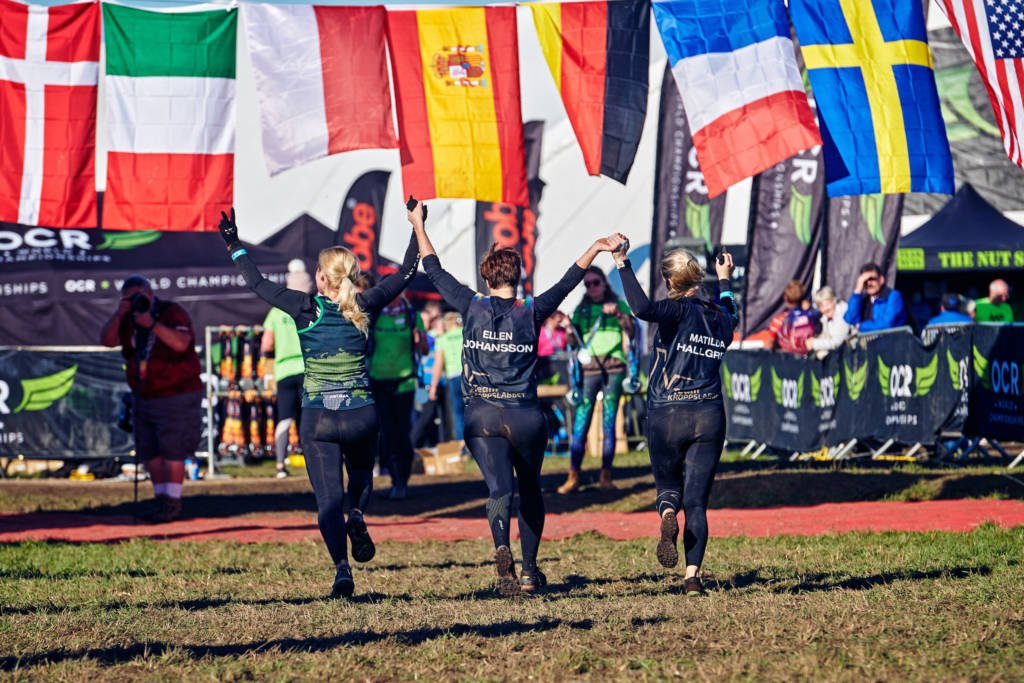
There are several ways to boost the intensity of your workout, whether by increasing the distance run between exercises, increasing the reps or time of each exercise, adding weight to movements (bench press-ups become dumbbell bench presses), or by trying to beat your time and mimicking the urgency that you will face in the OCR World Championships. You can even work out with an accountability buddy of a similar level and compare scores to help make training more competitive.

